Church Of MO – Twin Touring Sportbikes

Sheesh, two motorcycle manufacturers shutting their doors in less than a month. First it was Victory, and now it’s Buel… errr, EBR. Coincidentally, Buell got his time in the spotlight in last week’s Church feature, and while we don’t normally post consecutive Church features from the same manufacturer, with the unfortunate news of Erik Buell winding down yet again we feel it’s the right thing to do. So to celebrate Buell, this week’s we’re going all the way back to 1998 and the test between the Buell S3T Thunderbolt and Ducati ST2 Sport Turismo. As a special treat, joining the old MO staff of Mark Hammond and Billy Bartels is none other than Chuck Graves – yeah, that Chuck Graves. What do they think of this Italian/American mashup? Read on to find out. And for more pictures of the duet, be sure to visit the photo gallery.
Twin Touring Sportbikes
The good people in the marketing departments of your favorite motorcycle manufacturers have tried to make it easy for consumers to find the bike of their dreams. In North America, the epicenter of consumer culture, there are three primary street-only motorcycle categories: Custom/cruisers, sportbikes, and tourers. Each category represents, in a nice, neat package, what manufacturers believe consumers expect from their bikes. The custom/cruiser category seems to say, “Hey, look at me.” The sportbike category shouts, “Hey, look at me wad.” The touring category declares, “Hey, you can’t help but look at me because my bike is bigger than yours.”
But being geeks conditioned to a world of precise commands and codes, the staff at MO tends to have very literal minds. To us, words have specific, precise meanings, so when we hear “sport-touring motorcycle,”
specific bikes come to mind: Honda’s ST1100 and BMW’s R1100RS, for example. Quick, comfortable, touring bikes that handle relatively well — touring motorcycles with sporty capabilities.
When we were dreaming up shootouts, we wanted to take some long rides, so we immediately penciled into our editorial schedule, “Sport-Tourer Shootout.” Searching for any excuse to flee Los Angeles, we scheduled a couple of runs up north, and with the introduction of Buell’s S3T Thunderbolt and Ducati’s ST2 Sport Turismo, there were now enough “S” or “T” bikes on the market for perhaps two or three northerly excursions. First, we would compare the twin-cylinder sport-tourers, the Buell and Duc along with BMW’s R1100RS. Later, we’ll test the multi-cylinder bikes.
After a few miles on the tight mountain roads between Gorman and Paso Robles, we noticed that the Ducati and the Buell felt at home while the R1100RS, so comfortable on the freeways and highways, had a very hard time keeping up. Sitting in a Paso Robles motel room drinking Coronas and mutilating limes with a butter knife we’d lifted from the Denny’s across the street, it dawned on us, between burps, that we might have stumbled upon yet another hybrid class of motorcycle.
The ST2 and the S3T are not so much sport-tourers, as touring sports. What’s the difference, you say? Well, in “sport-tourers”, “sport” modifies “tourer.” Thus, a “sport-tourer” is essentially an aggressive touring bike, like the BMW R1100RS. However, flip-flop the words, where “touring” modifies “sport”, you have a completely different concept — a sportbike with touring features. It seems as though we are splitting semantic hairs, but we feel the difference looms large. This is how we see the Ducati ST2 and the Buell S3T Thunderbolt — sportbikes set up for touring duty.
Touring, especially overnight runs through your favorite backroads, is something both these bikes do well. The stock seats on both aren’t bad, they’re just not great. Seating positions and overall rider ergonomics are good. Where one bike is comfortable, the other isn’t and vica-versa. The Ducati is more hardcore sport. Lower bars place the rider farther over the front wheel than on the Buell, and the pegs are swept a little farther back. The Duc’s fairing managed windblast well at high speeds and helped keep weight off the rider’s wrists, but at speeds below 70 mph the ST2’s more aggressive, forward riding position was uncomfortable for long-distance freeway riding. The Buell’s more upright position felt great in the city and at low and medium speeds. Conversely, it was at high speeds, over 85 mph, that windblast became bothersome.
The straight, wide-open road will not make these bikes happy. Like their sportbike cousins, the ST2 and the S3T are at home on tight, twisting roads. In the slower, tighter corners, the Buell has the decided advantage with its smaller wheelbase and wide handlebars that offer greater leverage. In the fast corners both bikes handled very well. However, we were surprised that the ST2 is a relatively “heavy” turning bike. “Light” and “quick turning” are descriptives generally associated with Ducs, yet the Buell turned quicker. In designing the ST2, Ducati opted for more stability.
The ST2’s chassis sports a tubular trestle frame similar to the 916 in torsional rigidity and lightness. Weight distribution of the Ducati is spread out between the front and rear a little more evenly than the Buell, which exhibits a rear-weight bias. Accordingly, the Buell doesn’t always want to keep its front end on the ground, and it can be slightly twitchy in high speed corner transitions. However, its excellent chassis and stiff suspension helped keep the S3T very stable over fast, rough roads.
Overall, the braking on the Buell was better than on the Ducati. The Nissin six-piston caliper and sintered metal pad bind with amazing force. In fact, the initial bite is so strong that you can’t simply “grab a handful,” despite having only a single front rotor. The Ducati is equipped with twin 320 mm floating Brembo discs and four-piston calipers in the front and a single 245 mm disc with a twin-piston caliper at the rear. Initial bite was a bit soft, thus a bit more forgiving. Still, perhaps because of the forward position of the rider, the Ducati suffered from greater brake dive than the Buell.
One area in which the Ducati clearly had the advantage over the Buell is ground clearance. The Ducati’s narrow footpegs are set higher and farther back than the Buell’s lower and more comfortable pegs. Also, with the saddlebags off, the Ducati’s muffler can be raised for even more ground clearance. A very trick feature.
The Buell S3T (and the S3 as well) is powered by the same engine we raved about in our review of the S1 White Lightning, pumping out 88 horsepower at the rear wheel and 76 ft-lbs of torque. Suprisingly, all that power came at a relatively low cost. The S3T averaged 43 miles per gallon. The Ducati is powered by a new version of its 90-degree, liquid-cooled V-twin engine, enlarged to 944cc for touring duty. SOHC, 2-valve desmo heads similar to Ducati’s early Paso models, are employed. The ST2 averaged 39 miles per gallon. The ThunderStorm is clearly the more powerful engine, and the only complaint we have stems from the familiar heat from the right side pipes and the trademark vibration at idle that all but disappears when the engine revs over 3000 rpm. The Ducati was clearly smoother at idle and low speeds, but we did note some mirror distortion at a higher clip on the freeway. Clutch and shifting play were very similar, both having a heavy feel and pull.
In the end, both the Ducati and the Buell were in a virtual tie. However, what tipped the balance in favor of the Ducati was the ST2’s overall fit and finish. We liked the easy-to-read instrument panel, and the digital odometer and water temperature gauge. Buell’s minimalist instrument panel, which works well with the naked Cyclone and Lightning, is lacking on a touring sport. Ducati has excellent, easy-to-open-and-remove hardbags, similar to the BMW’s popular and functional system. On the other hand, the Buell’s bags aren’t designed to be removed unless they are open and empty (though, to Buell’s credit, the bags do come with a nice set of removable bag liners). In fact, we couldn’t open the right side bag at all due to an early production glitch that Buell has since corrected.
The Ducati ST2’s sleek and stylish design reminds us of BMW and their meticulous attention to detail. Aesthetically, from headlight to taillight, the ST2 is nearly flawless. Although the Buell creates a striking profile, we do have some issues. While the lower fairing does an adequate job in protecting the rider from the elements, it is ugly. Also, the right side fairing cracked at the mounting joint on the engine case. Common to all S3s and S3Ts, the windscreen is crooked. Don’t get us wrong, both bikes are very cool. However, it’s policy at Motorcycle Online to declare a winner for each shootout, and, in a very close contest, we choose Ducati’s ST2 as the winner in our Twin Touring Sport Shootout.
Impressions:
When I announced I was riding the Ducati to Vegas, the staff asked me if I were on crack. Ducatis aren’t exactly known for their reliability, and the staff had vision of me stuck in Baker, home to what seems like as many fast-food joints as people, as well as a three-story thermometer, but then the negative lead bolt on the Buell fell out on Billy at 1:00 a.m. in Echo Park, not a particularly choice place to be stranded either. Besides, this is supposed to be Ducati’s long-distance touring bike. If it couldn’t make a trip from L.A. to Vegas — a 550 mile round trip — then what good is it?
The ST2 made the trip easily. In fact, the ST2 served us well for the entire time we had it — almost 9 weeks — with nary a complaint. Except for the negative lead snafu, the Buell also performed well, and I might have picked the Buell number one if it had easily removable bags, a straight windscreen, and lost the ugly lower fairing that ruined the lines of a very good looking bike. While I would have preferred the Duc with a little more power, the ST2 did everything well, from performance to profile. The Buell is cool, but the Ducati is a little more refined.
2. Billy Bartels, Associate EditorNo question in my mind, the Ducati ST2 is the winner here. If you’re not a racer like Chuck, you’re not going to be compliaining about slow steering and a lack of power. This puppy could waste almost anything with or without saddlebags down Highway 58 (one of the Central California roads we tested on). It looks great, the fairing just works, and it has that cool offset headlight like on the 916. This bike is pure sex.
The Buell, just like all Buells, is a cool bike, it just needs a few things fixed. You want to get over the front end of this bike to keep the front wheel more firmly planted on the ground, but the seat tapers off to the size of a postage stamp at the front. That’s great if you want to do wheelies, but not if you want to tear up a canyon. Also, the detail wasn’t there like it was on the Ducati. The minimallist approach that works so well on the Lightning, needs a little refinement in sport-tourer trim, or touring-sport, or whatever…
3. Chuck Graves, Contributing Editor & RacerThe Ducati was fine. The steering was a little slow and it could use a little more top-end in the twisties. Sure, it’s stable, but it’s a Ducati. Where’s the rush?
I took the Buell up to Malibu with Clint, my mechanic, and tooled around. He could barely keep up on his CBR600F3. The S3T steers quickly, is very comfortable, and has a killer 90hp motor. The Buell rules.
Point the S3T at a twisty road: The twistier the better.
The bags are spacious, but not well-designed. They stick out too far (the Duc’s were recessed, caught less bugs and pushed less wind), the latch broke, and the latching mechanism is quirky, to say the least.
However, the removable bag liner is sweet.
Buell added an analog clock to the minimalist dash.
Monster torque and the quick turn-ins made the Buell scream in the tight stuff. The only problem were the comfortable, but low footpegs.
A nice touch: Fairing bags tucked beside the instrument panel.
The negative battery bolt (shown here) fell out during a trip through downtown LA at 1:00 a.m. Fortunately, a friend with insomnia and a ready-to-be-cannibalized Magna in his back yard came to the rescue.
In fast sweepers the Buell experienced slight headshakes in corner exits.
Some complained about the strong bite of the new Nissin calipers, while others thought it cool as hell. Altogether, braking on the Buell was far better than on the Ducati.
The lower fairing doesn’t do a great job of blocking the wind, and it looks god-awful as well. The lower right-side fairing cracked from vibration.
The Buell throws a striking profile, but the lack of attention to small details, in particular the crooked, sloped windscreen, landed it in second place.
Specifications:
Manufacturer: Buell American Motorcycle Co.
Model: S3T Thunderbolt Sport Touring
Price: $12,799.00 USD
Engine: Air-cooled, four-stroke, 45 degree V-Twin
Bore and Stroke: 3.5 x 3.8 in
Displacement: 1203 cc
Carburetion: 40 mm Keihin CV
Transmission: Five-speed, wet clutch
Wheelbase: 55.0 in/1379 mm
Seat Height: 29.5 in/749 mm
Fuel Capacity: 5.5 gal (.6 gal reserve)/20.8 L (2.3 L reserve)
Claimed Dry Weight: 465 lbs/193 kg
Measured Wet Weight: 520 lbs/236 kg
Peak Measured Torque: 75.9 ft-lbs @ 5500 rpm
Peak Measured HP: 87.2 hp @ 6250 rpm
The ST2’s not-quite-attractive saddlebag mounts are a snap to use. Check out the empty hole just above the muffler. For even more ground clearance raise the exhaust when the bags are off.
A good view of the very-progressive shock and the back half of the trellis frame. Look closer for a cool view of the ocean from the Santa Monica Mountains above Malibu.
The ST2 was slower steering than the Buell, but rock-solid stability made it a joy to toss around the curves.
A view of the Sport Turismo’s toolkit (the Buell doesn’t have one), rebound adjuster, and fuel-injection brain.
A picture of a Duc pilot happily tearing up some backroads…
…and another. The adjustable pipe was there to use, but we never hit bottom on the ST2.
An attractive dash with digital readouts greets the ST2’s pilot.
Besides cash, the arrvial of Texas Pacific brought a new logo.
Specifications:
Manufacturer: Ducati
Model: 1998 ST2 Sport Turismo
Price: $12,495.00 USD
Engine: 4 stroke 90 degree V-Twin
Bore and Stroke: 94 mm x 68 mm
Displacement: 944 cc
Carburetion: Weber-Marelli electronic indirect injection
Transmission: Six-speed, dry, multi-plate clutch
Wheelbase: 56.3 in/1430 mm
Seat Height: 32.3 in/820 mm
Fuel Capacity: 6 gal (1 gal reserve)/23 L (4 L reserve)
Claimed Dry Weight: 466 lbs/212 kg
Measured Wet Weight: 540 lbs/245 kg
Peak Measured Torque: 57.3 ft-lbs @ 6500 rpm
Peak Measured HP: 76.0 hp @ 8250 rpm
The Brembo brakes didn’t have the authority of the Nissin units on the Buell.
Something about the cool, super-bright headlight and the helmet stuck on top a post to mark your territory.
Another beautiful view of Malibu.
A centerstand allows you to park this Ducati just about anywhere…
… but the sidestand is a joke. Ducati’s spring-loaded, auto-retracting kickstand system sucks.
The throw on the shifter lever was a bit shorter than we would have liked, but we hear an M900 lever will bolt right on.
No matter what the angle, the ST2 strikes a gorgeous profile.
Where’s the Beemer?
The 1998 BMW R1100RS is one of the best sport-touring motorcycles on the market. It has everything a sport-touring rider needs: Comfortable ergonomics, great wind protection, a humane, forward riding position and an excellent, removable hardbag system. The fit and finish is typical BMW — excellent. Then, if this is such a great bike, why wasn’t it included in the shootout with the Buell and the Ducati?
BMWs are essentially high-performance touring bikes, not relaxed sportbikes. Where the BMW had the decided advantage over both the Buell and the Duc was on long, gently meandering roads — mainly freeways and state highways. Its smooth powerband, excellent wind protection and riding position make 500-mile days a snap. Where the R1100RS is at a decided disadvantage is on the tighter, twisty roads.
The RS weighs 40 pounds more than the Duc and 60 more than the Buell, and its wheelbase is 1.2 inches longer than the Duc and 2.5 inches longer than the Buell. The RS is a great high-mileage sport-tourer, but not a canyon scratcher. That’s not to say that the RS isn’t fun in the canyons. But it is not a quick turning bike and it must be ridden hard to keep up with the lighter, quicker Buell and Ducati.
There is a lot we like about this bike. Much of what we like is common to all next-generation Boxers, particularly the no-brake-dive Telelever front suspension and excellent ABS system, although at a 9/10ths pace the ABS brakes are overwhelmed slightly. The instrument panel, with a digital fuel gauge and clock, is tastefully laid out and easy to read.
The hardbag system is a great — Ducati essentially copied the design for the ST2 — although it is small; we couldn’t fit a large-sized, full-face helmet. We also liked the seating position: Forward, but not so far over the front end that it becomes uncomfortable over long distances or in slower, city traffic. Even better, the seat height is adjustable.
Since it is a twin, vibrations are noticed, but they are neither intrusive or annoying, just omnipresent at highway speeds. Ample torque is available for passing, although some bottom-end torque has been sacrificed for top-end horsepower.
Handling is very good and very stable, but the steering is slow, and one MO staffer commented that he found it necessary to hang way off the bike in order to keep up with the other two twins.
Since its debut in 1995, BMW has not made any significant powertrain changes on the new-generation Boxer. That’s good and bad news, because we wish they’d do something about the clunky tranny. Missed shifts and false neutrals are not uncommon, and that shouldn’t happen on a $15,000 motorcycle.
Shifting must be made with solid, Teutonic authority. “I vill sheeft das bike into second gear now!” It’s something that all Beemer owners get used to and eventually take for granted, but for moto-journalists used to riding 20-30 different bikes a year, it is a very noticeable flaw.
The 1998 BMW R1100RS is expensive, listing at $14,750 MSRP.
ABS is standard. It is an excellent sport-touring and commuter bike, able to send you off to work or the store before ripping off 500 mile days while throwing in a little canyon carving to spice up the journey.
Specifications:Manufacturer: BMW
Model: 1998 R1100RS
Price: $14,750.00 USD
Engine: Air/Oil cooled opposed twin cylinders
Bore and Stroke: 99 mm x 70.5 mm
Displacement: 1085 cc
Carburetion: Bosch Motronic electrical fuel-injection
Transmission: 5-speed w/dry, single plate clutch
Wheelbase: 57.5 in/1467 mm
Seat Height: 30.7/31.5/32.2 in 780/800/820 mm
Fuel Capacity: 6 gal (1 gal reserve)/22.7 L (3.8 L reserve)
Claimed Dry Weight: 506 lbs/230 kg
Measured Wet Weight: 580 lbs/263 kg

Troy's been riding motorcycles and writing about them since 2006, getting his start at Rider Magazine. From there, he moved to Sport Rider Magazine before finally landing at Motorcycle.com in 2011. A lifelong gearhead who didn't fully immerse himself in motorcycles until his teenage years, Troy's interests have always been in technology, performance, and going fast. Naturally, racing was the perfect avenue to combine all three. Troy has been racing nearly as long as he's been riding and has competed at the AMA national level. He's also won multiple club races throughout the country, culminating in a Utah Sport Bike Association championship in 2011. He has been invited as a guest instructor for the Yamaha Champions Riding School, and when he's not out riding, he's either wrenching on bikes or watching MotoGP.
More by Troy Siahaan




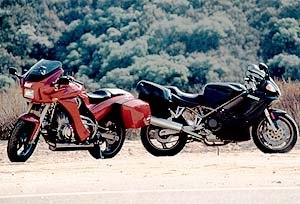


























































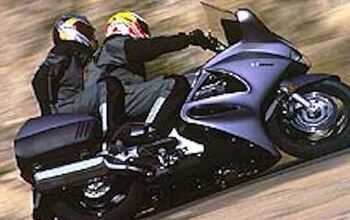
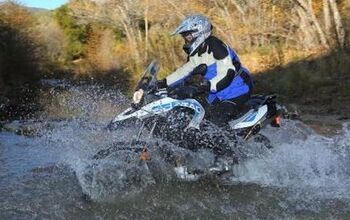
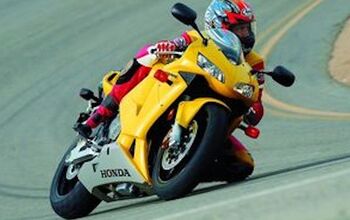
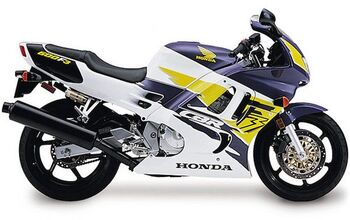











Comments
Join the conversation
I bought a clean, used, Buell S3T, and two months later, Harley dropped Buell into the dumpster. I liked that bike, though, and two years later I bought a Ulysses. The Uly was a far more polished machine, except for that darned cooling fan and the pulsing front brake. Both of them had the low maintenance hydraulic lifters and belt drives.
I have a Ducati ST4s that is just about a perfect mix of sport and touring as long as days stay around 350-400 miles. That thing is blisteringly fast and handles wonderfully. A 4 valve motor and Ohlins shock help a lot.